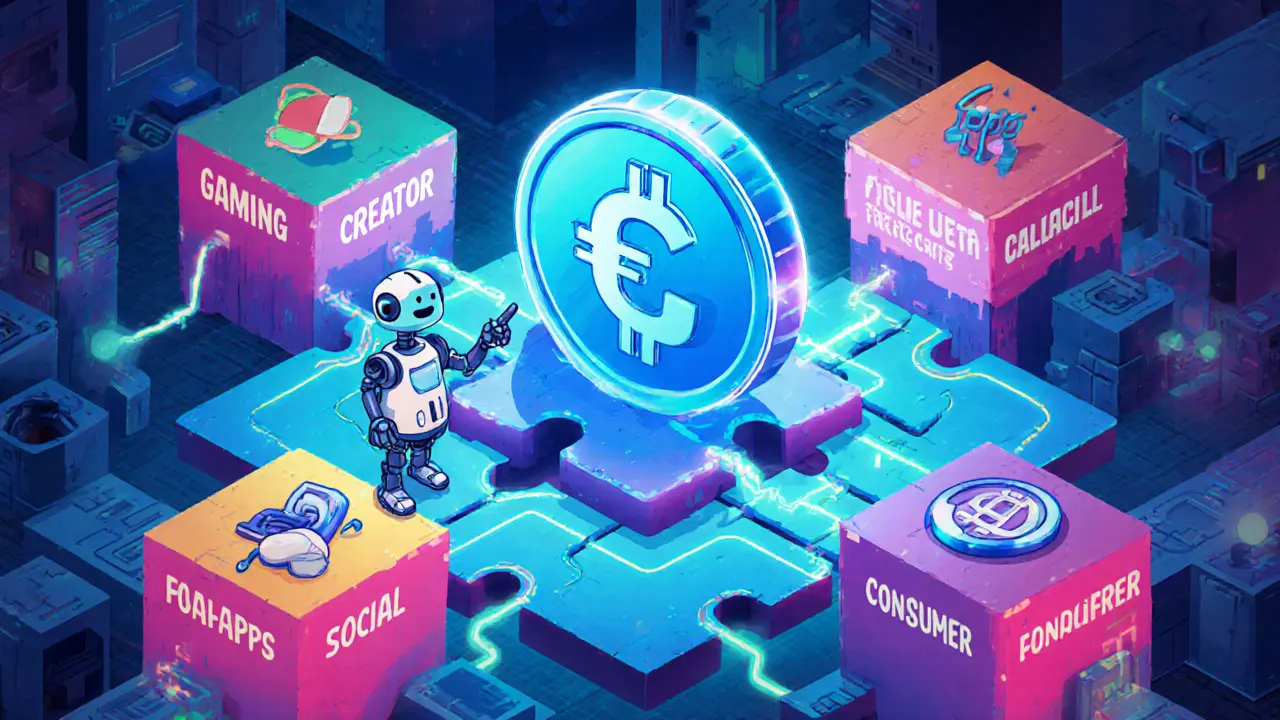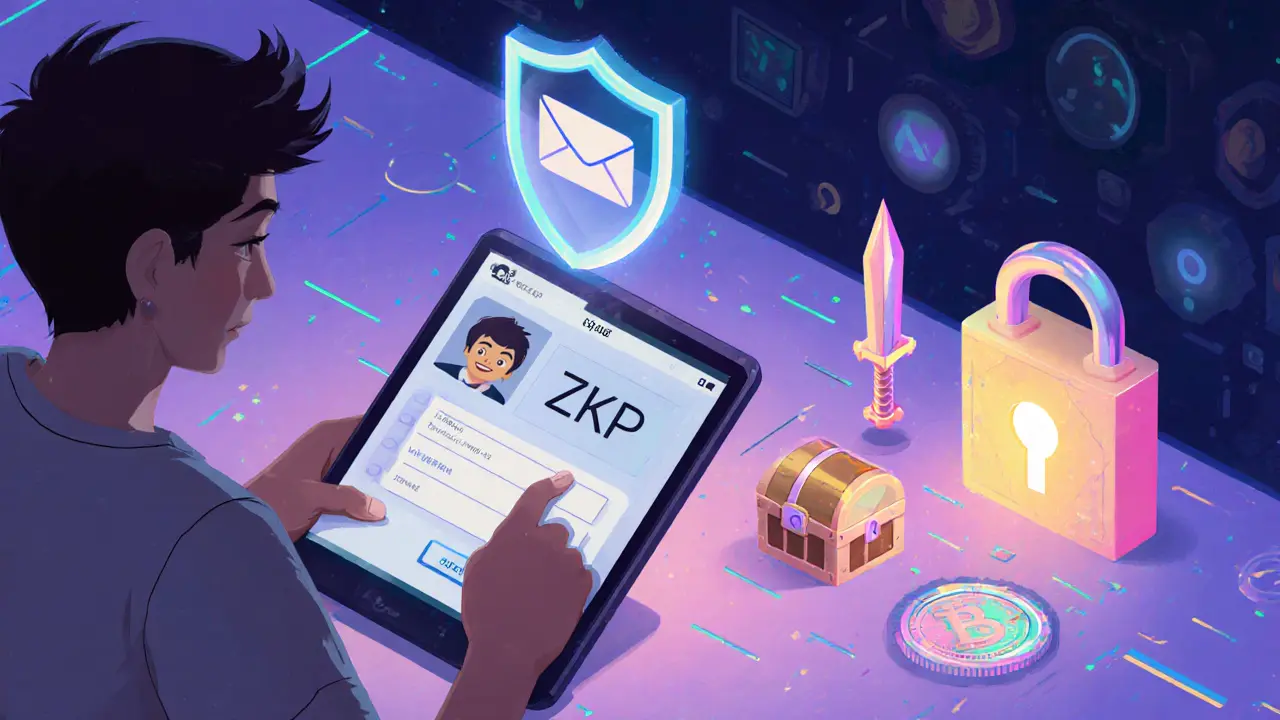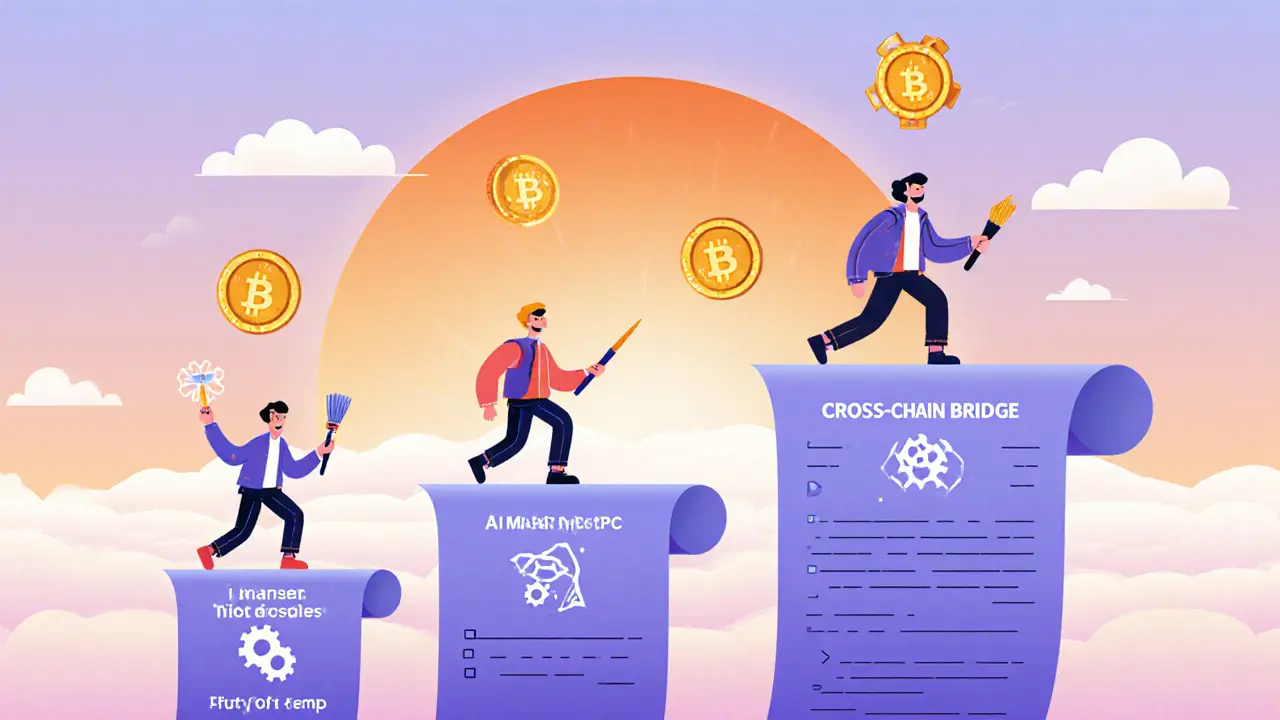
- 14 Sep 2025
- Elara Crowthorne
- 11
GLIDR Token Price & Features Calculator
Current Token Information
As of October 2025
+5.5% (30-day change)
Total Supply: 100M GLIDR
Circulating Supply: ~15-28M GLIDR
Market Cap: $16-28M
Investment Calculator
Investment Value: $0.00
Projected Value in 1 Year: $0.00
Profit/Loss: $0.00
Core Features
- Account Abstraction for wallet-less sign-in
- Zero-Knowledge Proof (ZKP) integration for privacy
- Programmable Smart Locks for digital assets
- Programmable Asset Issuance for custom tokens/NFTs
- Modular Web3 infrastructure for developers
Use Cases
- Blockchain Gaming
- Creator Economy Platforms
- Social Applications
- Consumer Tools & Payments
About GLIDR
GLIDR is a utility token powering a modular Web3 infrastructure suite designed to simplify blockchain adoption for games, creator platforms, social apps, and consumer tools. Its unique features include account abstraction, ZKP support, and programmable smart locks.
When you see GLIDR is a utility token that powers a modular Web3 infrastructure layer, aimed at simplifying blockchain adoption for games, creator platforms, social apps, and consumer tools, you might wonder how it fits into the crowded crypto space. As of October 2025 the token trades around $1.15 and offers developers a suite of services that hide blockchain complexity from end‑users.
The GLIDR token aims to become the go‑to infrastructure asset for next‑gen decentralized apps.
Key Takeaways
- GLIDR is a utility token powering a modular Web3 infrastructure suite.
- Technical features include account abstraction, zero‑knowledge proof support, and programmable smart locks.
- Token economics: 100M total supply, ~15‑28M circulating, market cap around $16‑28M.
- Primary use cases cover blockchain gaming, creator economies, and social applications.
- GLIDR trades on both CEXs like MEXC and DEXs, with modest volume and low volatility.
What Is GLIDR?
Web3 infrastructure the set of protocols, tools, and services that let developers build decentralized applications without writing low‑level blockchain code is the backbone of the GLIDR ecosystem. By abstracting away wallet management, gas fees, and token standards, GLIDR lets developers focus on user experience.
Core Technical Components
Account abstraction a layer that lets developers design custom login flows, masking the underlying blockchain address from the end‑user is one of GLIDR’s flagship features. It enables “one‑click” onboarding similar to traditional web services.
Another pillar is Zero‑knowledge proof (ZKP) cryptographic techniques that verify data without revealing it, boosting privacy and scalability. GLIDR integrates ZKPs to keep user actions private while still confirming transaction validity.
The platform also offers Programmable smart locks customizable access controls for digital assets, allowing creators to set time‑locks, royalty splits, or conditional releases. This is especially handy for game developers who want to lock in‑game items until certain milestones are hit.
Finally, Programmable asset issuance the ability to mint bespoke tokens or NFTs directly from the GLIDR SDK, with flexible supply rules and royalty mechanisms streamlines tokenomics for any application.

Token Economics
GLIDR’s token model is straightforward. The total supply is capped at 100million GLIDR tokens. Circulating supply figures differ across trackers, ranging from 13.8M to 24.33M, which puts the current market capitalization between $15.9M and $27.9M.
With a fully diluted valuation near $115M, a large portion of tokens remains locked for future ecosystem incentives, developer grants, and partnership programs. Daily trading volume hovers around $103‑$106K, giving a volume‑to‑market‑cap ratio of roughly 0.66%. This low turnover is typical for infrastructure‑focused tokens that attract long‑term investors rather than speculative traders.
Price stability has been a hallmark this year. Over the last 24hours GLIDR traded between $1.13 and $1.16, while the 30‑day move shows a modest +5.5% gain. The token’s low volatility makes it appealing for developers who need a predictable utility token for fee payments within the platform.
Primary Use Cases
GLIDR was born out of the blockchain gaming the segment where developers create play‑to‑earn or NFT‑backed games on a blockchain but has quickly expanded.
- Gaming: Developers can integrate GLIDR’s account abstraction to let players sign in with an email or social login, while smart locks protect in‑game assets until achievements are unlocked.
- Creator economy: Content platforms can mint custom tokens for creators, set royalty splits, and use ZKPs to keep subscriber data private.
- Social applications: Decentralized social networks benefit from seamless fiat‑crypto bridges built into GLIDR, reducing friction for non‑crypto users.
- Consumer tools: Wallet‑less payments, loyalty programs, and on‑ramp services can all leverage GLIDR’s programmable asset layer.
Market Position & Competition
GLIDR sits in the niche of developer‑focused Web3 infrastructure, competing with platforms that also aim to simplify on‑boarding and token issuance.
| Feature | GLIDR (GLIDR) | Polygon (MATIC) | Immutable X (IMX) | Solana (SOL) |
|---|---|---|---|---|
| Primary focus | Modular Web3 stack for games, creators, social | Layer‑2 scaling for Ethereum | Zero‑fee NFT minting | High‑throughput blockchain |
| Account abstraction | Native support | Via SDKs | Limited | Native |
| ZKP integration | Built‑in | Optional | Planned | Experimental |
| Smart lock capability | Programmable | None | None | Limited |
| Circulating supply (M) | 13‑24 | 6,600 | 5.4 | 360 |
| Market cap (M USD) | 16‑28 | 12,000 | 800 | 55,000 |
| Price volatility (30‑day) | Low (+5.5%) | High (≈30%) | Medium | Medium |
While Polygon and Solana boast larger ecosystems, GLIDR’s edge lies in its ready‑made developer modules that address user‑experience hurdles-especially the “wallet‑less” sign‑in and privacy‑first ZKP stack.

How to Buy and Trade GLIDR
GLIDR is listed on both centralized exchanges (CEX) like MEXC a global crypto exchange offering spot and futures markets and various decentralized exchanges (DEX) that support the ERC‑20 version of the token.
- Create an account on a supported CEX (e.g., MEXC) and complete KYC if required.
- Deposit USD, USDT, or another stablecoin.
- Search for the GLIDR trading pair (GLIDR/USDT) and place a market or limit order.
- If you prefer a DEX, connect a Web3 wallet (MetaMask, Trust Wallet) to a DEX aggregator like 1inch, select the GLIDR contract address, and swap your preferred token.
- Transfer the purchased GLIDR to a secure wallet if you plan to use it within the GLIDR SDK or for staking.
Risks and Regulatory Outlook
As a utility token, GLIDR generally avoids being classified as a security, but regulatory stances differ across jurisdictions. Projects must stay compliant with anti‑money‑laundering (AML) and know‑your‑customer (KYC) rules, especially when offering fiat‑on‑ramp services.
Potential risks include:
- Low liquidity could cause slippage for larger trades.
- Adoption risk: the platform’s success depends on developers choosing GLIDR over competing toolkits.
- Regulatory shifts that tighten definitions of utility tokens could impact token usage.
Future Roadmap
The team plans to roll out additional modules such as cross‑chain asset bridges, AI‑driven analytics for in‑game economies, and expanded fiat‑on‑ramp partnerships. As the Web3 consumer market matures, GLIDR’s modular approach positions it to add new services without forcing developers to rebuild existing integrations.
Frequently Asked Questions
What can I do with the GLIDR token?
GLIDR is used to pay for infrastructure services within the platform, such as minting custom assets, accessing premium SDK features, and participating in governance proposals.
Is GLIDR a good investment?
Investment decisions depend on your risk tolerance. GLIDR’s price has been relatively stable, but its value is tied to developer adoption and ecosystem growth.
How does account abstraction improve user experience?
It lets users sign in with familiar methods (email, social logins) while the underlying blockchain address stays hidden, removing the need for private‑key management.
Where can I find the GLIDR smart contract address?
The official contract address is published on the GLIDR website and verified on major block explorers like Etherscan under the ERC‑20 token listing.
Does GLIDR support cross‑chain transactions?
Cross‑chain bridges are on the roadmap. Early pilots aim to let assets move between Ethereum, Polygon, and Binance Smart Chain using GLIDR’s modular connectors.

11 Comments
Just dove into the GLIDR guide and wow, that account abstraction thing sounds like a game‑changer for newcomers! 😄 It could really lower the barrier for people who dread handling private keys. Also, the ZKP integration is a nice privacy boost. Overall, pretty optimistic vibes about this token. 🌟
I think GLIDR is aiming at a niche that many other platforms overlook – making crypto feel like regular web login. The token price looks stable and the supply isn’t huge, which is good for developers looking for predictable costs.
The philosophical angle of removing wallet friction reminds me of early web2 UX. If GLIDR can truly hide the blockchain from users, adoption could follow a steady curve.
Wow!!! This GLIDR thing is seriously impressive!!! The modular approach could revolutionize dev pipelines!!! Can't wait to see it in action!!!
Glidr's on‑chain smart locks? That's like a digital chastity belt for NFTs! lol. If they pull it off, creators will finally have real control over their drops. But i think the market is still too small to get major traction.
Totally agree with the point above – tools that simplify onboarding are the future. If devs can plug GLIDR in without learning too much blockchain, we should see more games adopting it.
GLIDR’s tokenomics are clearly designed for long‑term stability. The total supply of 100 million caps inflation, while the circulating amount remains modest, keeping price pressure low. The modest daily volume of around $100 K suggests that the token isn’t being heavily speculated on, which is a good sign for developers who need predictable fees. Because the token is used to pay for infrastructure services, developers benefit from a stable cost base that isn’t subject to wild swings. The market cap of $16‑28 M places GLIDR in a sweet spot: large enough to fund continued development, but small enough to allow meaningful upside if adoption grows. Its price has only moved +5.5 % over thirty days, indicating low volatility. This stability contrasts sharply with many meme‑coins that swing double‑digit percentages daily. GLIDR also offers cross‑chain bridge plans, which could broaden its utility beyond Ethereum, Polygon, and BSC. If those bridges launch successfully, liquidity will improve and slippage should decrease for larger trades. The roadmap mentions AI‑driven analytics for in‑game economies, a forward‑looking feature that could attract sophisticated game studios. Governance proposals powered by GLIDR give token holders a voice in protocol upgrades, fostering community involvement. Overall, the token’s design aligns with the needs of developers seeking a reliable utility layer rather than pure speculation.
Honestly, looks like another hype token to me. The whole "modular" buzz is just a rehash of what Polygon already does. If you ask me, it’s a risky bet.
I love the idea of wallet‑less sign‑in for gamers. It could really boost user acquisition for indie studios that can’t afford heavy onboarding flows.
While many hail GLIDR as a solution to adoption barriers, we should consider the hidden agendas behind these "infrastructure" tokens. The roadmap promises cross‑chain bridges, yet the team has yet to deliver any live demo. Historically, projects that overpromise on scalability and privacy end up falling short, leaving early investors holding devalued tokens. Moreover, the low liquidity could mask underlying manipulation; a sudden influx of tokens from the locked reserve could dump the price, harming the very developers the token claims to help. Regulatory scrutiny is also tightening on utility tokens that double as payment mechanisms, and if GLIDR gets re‑classified, its utility could be severely limited. In sum, proceed with caution and keep a diversified portfolio.
Okay, someone explain why GLIDR is suddenly trending. Is it because of the ZKP hype or just another crypto pump? I'm bored of all these "new" tokens promising the moon.